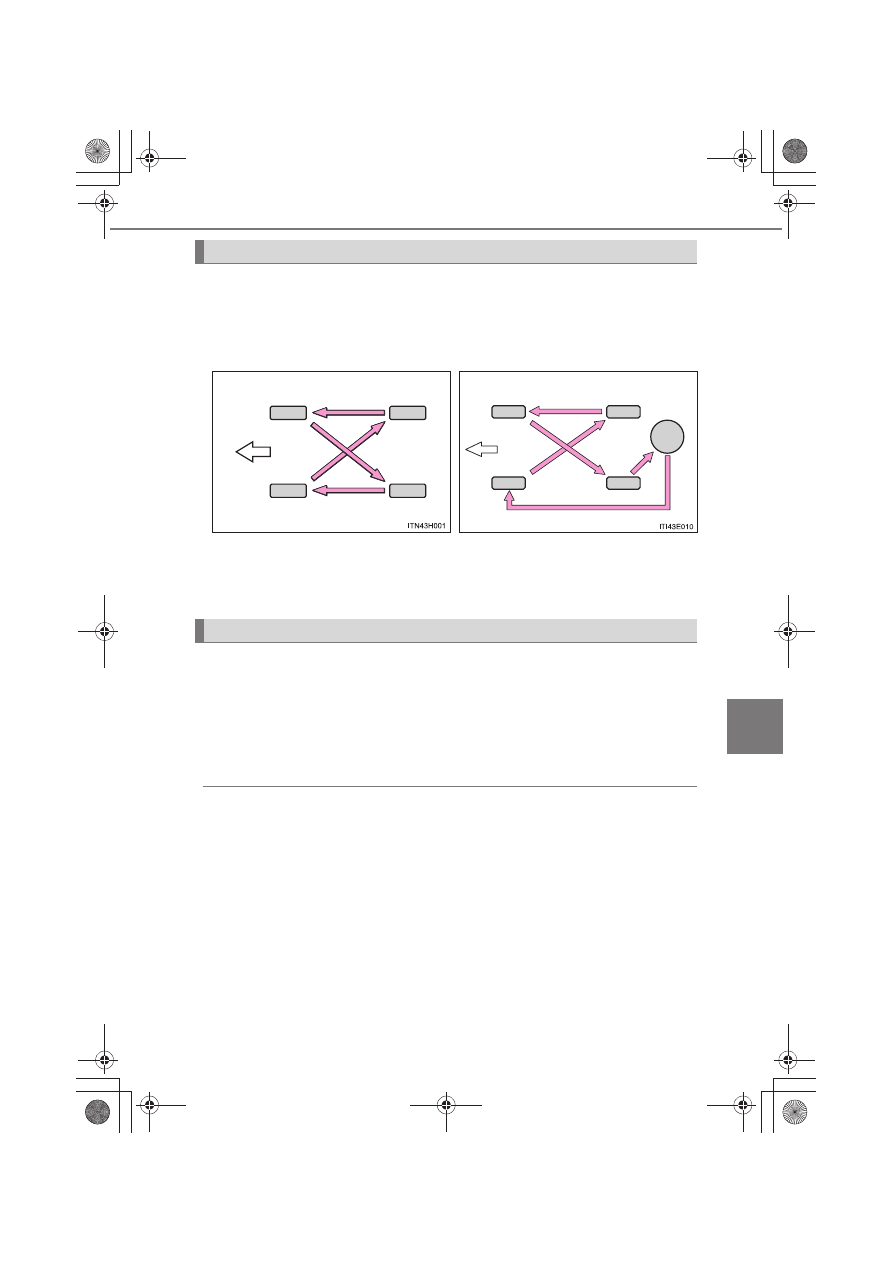содержание .. 126 127 128 129 ..
Toyota Hilux (2017 year). Manual - part 128

519
7-3. Do-it-yourself maintenance
7
M
ai
nte
nan
ce and
ca
re
Rotate the tires in the order shown.
To equalize tire wear and help extend tire life, Toyota recommends that tire
rotation is carried out approximately every 10000 km (6000 miles).
Do not fail to initialize the tire pressure warning system after tire rotation.
(vehicles with tire pressure warning system)
Your vehicle is equipped with a tire pressure warning system that uses
tire pressure warning valves and transmitters to detect low tire infla-
tion pressure before serious problems arise.
If the tire pressure drops below a predetermined level, the driver is
warned by a warning light. (
→P. 572)
◆
Installing tire pressure warning valves and transmitters
When replacing tires or wheels, tire pressure warning valves and
transmitters must also be installed.
When new tire pressure warning valves and transmitters are
installed, new ID codes must be registered in the tire pressure
warning computer and the tire pressure warning system must be
initialized. Have tire pressure warning valves and transmitter ID
codes registered by any authorized Toyota dealer or repairer, or
another duly qualified and equipped professional. (
→P. 521)
Tire rotation
X
Vehicles with spare tire of a dif-
ferent wheel type from the
installed tires
X
Vehicles with spare tire of the
same wheel type as the
installed tires
Front
Front
Tire pressure warning system (if equipped)